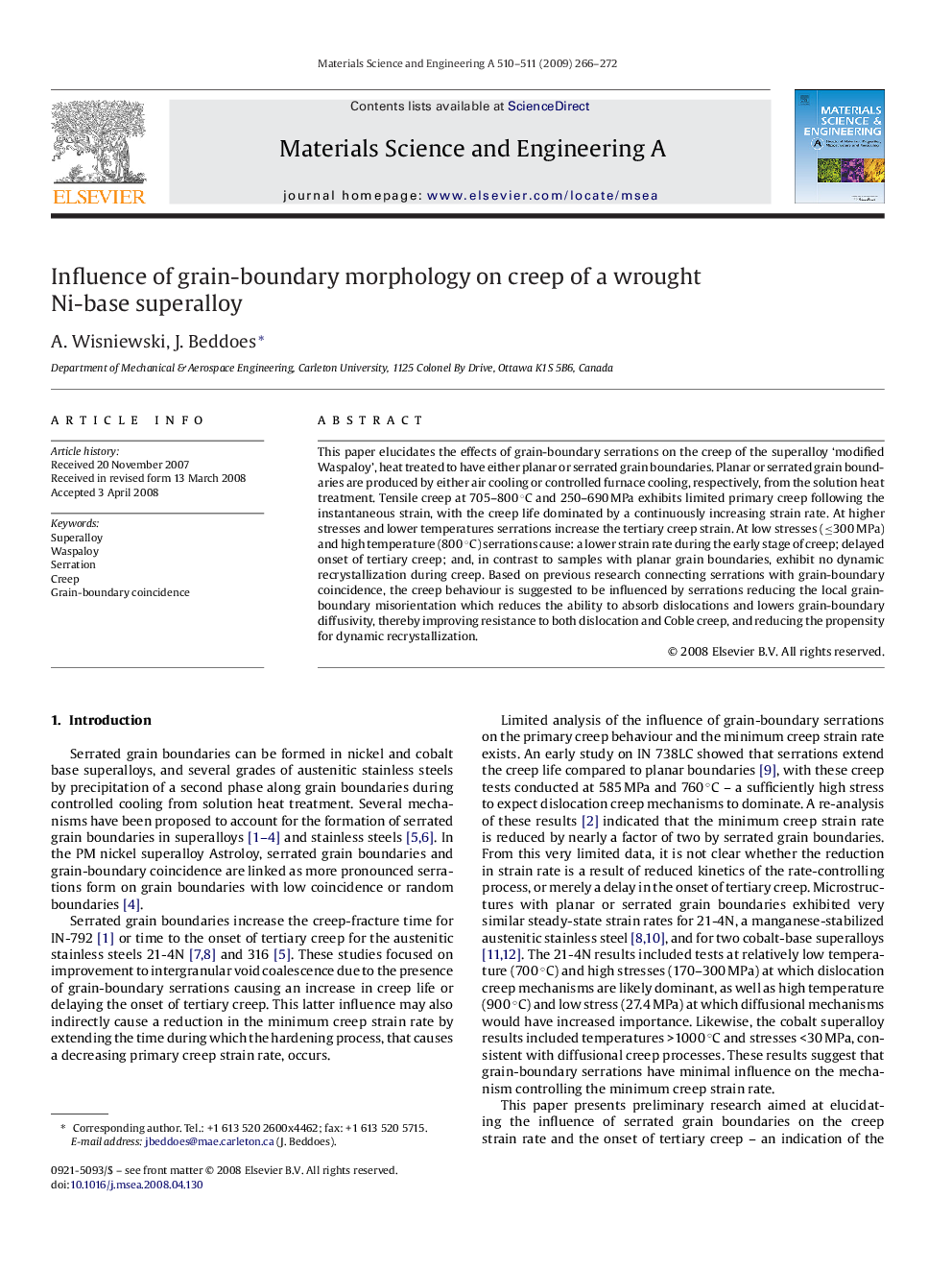| Article ID | Journal | Published Year | Pages | File Type |
|---|---|---|---|---|
| 1580771 | Materials Science and Engineering: A | 2009 | 7 Pages |
Abstract
This paper elucidates the effects of grain-boundary serrations on the creep of the superalloy 'modified Waspaloy', heat treated to have either planar or serrated grain boundaries. Planar or serrated grain boundaries are produced by either air cooling or controlled furnace cooling, respectively, from the solution heat treatment. Tensile creep at 705-800 °C and 250-690 MPa exhibits limited primary creep following the instantaneous strain, with the creep life dominated by a continuously increasing strain rate. At higher stresses and lower temperatures serrations increase the tertiary creep strain. At low stresses (â¤300 MPa) and high temperature (800 °C) serrations cause: a lower strain rate during the early stage of creep; delayed onset of tertiary creep; and, in contrast to samples with planar grain boundaries, exhibit no dynamic recrystallization during creep. Based on previous research connecting serrations with grain-boundary coincidence, the creep behaviour is suggested to be influenced by serrations reducing the local grain-boundary misorientation which reduces the ability to absorb dislocations and lowers grain-boundary diffusivity, thereby improving resistance to both dislocation and Coble creep, and reducing the propensity for dynamic recrystallization.
Keywords
Related Topics
Physical Sciences and Engineering
Materials Science
Materials Science (General)
Authors
A. Wisniewski, J. Beddoes,
